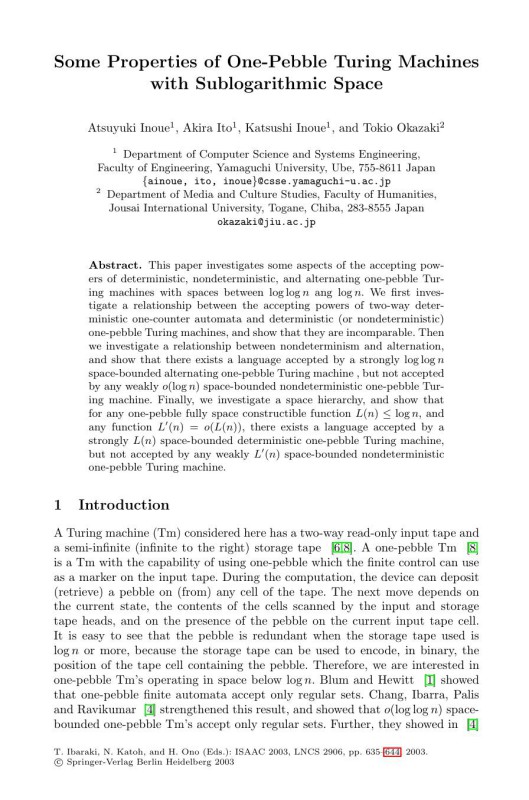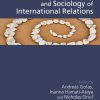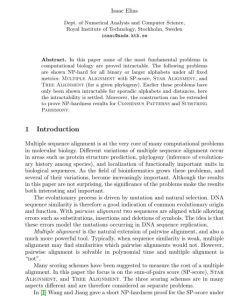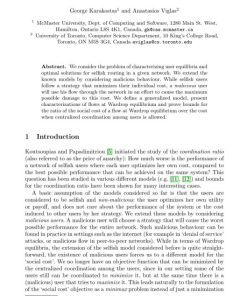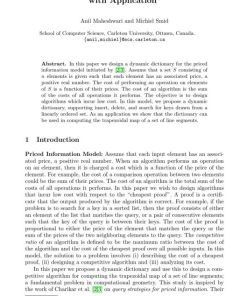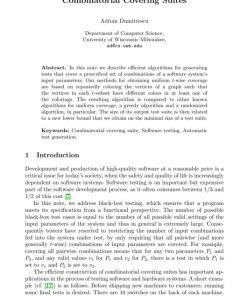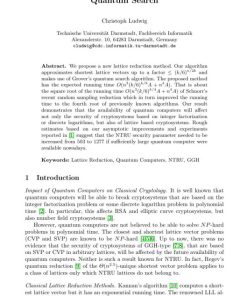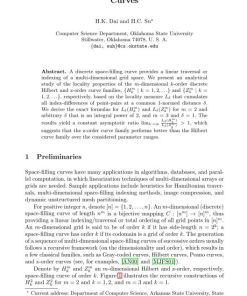Some Properties of One Pebble Turing Machines with Sublogarithmic Space 1st edition by Atsuyuki Inoue, Akira Ito, Katsushi Inoue, Tokio Okazaki ISBN 3540206958Â 978-3540206958
$50.00 Original price was: $50.00.$25.00Current price is: $25.00.
Authors:Atsuyuki Inoue, Akira Ito, Katsushi Inoue; Tokio Okazaki , Tags:Algorithms and Computation , Author sort:Atsuyuki Inoue, Akira Ito, Katsushi Inoue & Okazaki, Tokio , Languages:Languages:eng , Published:Published:Oct 2003
Some Properties of One Pebble Turing Machines with Sublogarithmic Space 1st edition by Atsuyuki Inoue, Akira Ito, Katsushi Inoue, Tokio Okazaki – Ebook PDF Instant Download/Delivery. 3540206958 , 978-3540206958
Full download Some Properties of One Pebble Turing Machines with Sublogarithmic Space 1st Edition after payment
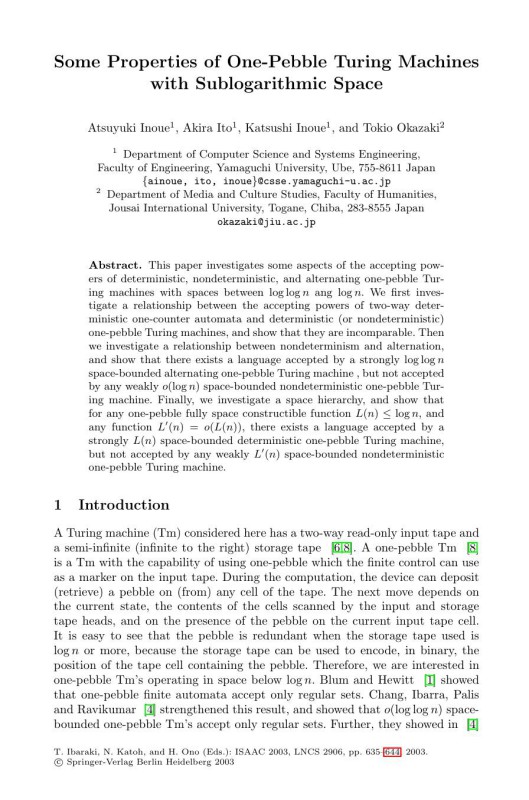
Product details:
ISBN 10: 3540206958
ISBN 13: 978-3540206958
Author: Atsuyuki Inoue, Akira Ito, Katsushi Inoue, Tokio Okazaki
This paper investigates some aspects of the accepting powers of deterministic, nondeterministic, and alternating one-pebble Turing machines with spaces between log log n ang log n. We first investigate a relationship between the accepting powers of two-way deterministic one-counter automata and deterministic (or nondeterministic) one-pebble Turing machines, and show that they are incomparable. Then we investigate a relationship between nondeterminism and alternation, and show that there exists a language accepted by a strongly log log n space-bounded alternating one-pebble Turing machine , but not accepted by any weakly o(log n) space-bounded nondeterministic one-pebble Turing machine. Finally, we investigate a space hierarchy, and show that for any one-pebble fully space constructible function L(n) ≤ log n, and any function L′(n)=o(L(n)), there exists a language accepted by a strongly L(n) space-bounded deterministic one-pebble Turing machine, but not accepted by any weakly L′(n) space-bounded nondeterministic one-pebble Turing machine.
Some Properties of One Pebble Turing Machines with Sublogarithmic Space 1st Table of contents:
-
Introduction
- 1.1 Overview of Turing Machines and Computational Models
- 1.2 The Role of Pebble Turing Machines in Computation Theory
- 1.3 Sublogarithmic Space Constraints and Their Relevance
- 1.4 Motivation for Studying One Pebble Turing Machines with Sublogarithmic Space
- 1.5 Structure of the Paper
-
Background and Preliminaries
- 2.1 Turing Machines: Basic Concepts and Definitions
- 2.2 Pebble Turing Machines: A New Paradigm for Computation
- 2.3 Sublogarithmic Space Complexity: Definition and Examples
- 2.4 Previous Work on Space-Bounded Computation Models
- 2.5 Theoretical Significance of Sublogarithmic Space Classes
-
One Pebble Turing Machines
- 3.1 Definition and Construction of One Pebble Turing Machines
- 3.2 Basic Operation of a One Pebble Turing Machine
- 3.3 Computational Power of One Pebble Machines in Comparison to Standard Turing Machines
- 3.4 Space Complexity of One Pebble Turing Machines
- 3.5 State and Transition Functions in One Pebble Models
-
Space Complexity in Sublogarithmic Regimes
- 4.1 Defining Sublogarithmic Space: Formalizing the Boundaries
- 4.2 Space Hierarchies and Their Implications for Pebble Turing Machines
- 4.3 Space-Bounded Complexity Classes and One Pebble Machines
- 4.4 Efficiency and Limitations of One Pebble Turing Machines with Sublogarithmic Space
- 4.5 Comparison with Other Space-Bounded Models (e.g., Logarithmic Space Machines)
-
Properties of One Pebble Turing Machines with Sublogarithmic Space
- 5.1 Decidability and Recognizability in Sublogarithmic Space
- 5.2 Closure Properties: Languages Accepted by One Pebble Machines
- 5.3 Computational Hierarchies in One Pebble Models
- 5.4 The Impact of Sublogarithmic Space on Computational Efficiency
- 5.5 Non-Determinism vs. Determinism in Sublogarithmic Space Machines
-
Simulations and Characterizations
- 6.1 Simulating One Pebble Turing Machines with Sublogarithmic Space
- 6.2 Characterizing Languages Recognizable by One Pebble Turing Machines
- 6.3 Reductions Between Space Classes: One Pebble vs. Other Models
- 6.4 Comparing One Pebble Turing Machines to Finite Automata and Other Limited Models
- 6.5 Hierarchies of Languages Based on Space Bounds
-
Applications and Implications
- 7.1 One Pebble Turing Machines in Practical Computation
- 7.2 Relevance to Real-World Systems with Sublogarithmic Space Requirements
- 7.3 Insights into the Limits of Computation with Limited Space Resources
- 7.4 Connections to Memory-Constrained Systems and Embedded Computing
- 7.5 Applications in Cryptography and Security Protocols
-
Challenges and Open Problems
- 8.1 Unresolved Questions on the Power of One Pebble Turing Machines
- 8.2 Space Complexity Classes Beyond Sublogarithmic Boundaries
- 8.3 Open Problems in the Simulation and Characterization of One Pebble Models
- 8.4 Investigating the Role of Non-Determinism in Sublogarithmic Space
- 8.5 Directions for Future Research in Space-Bounded Computation
-
Conclusion
- 9.1 Summary of Key Findings on One Pebble Turing Machines with Sublogarithmic Space
- 9.2 Contributions to the Theory of Space-Bounded Computation
- 9.3 Practical Implications for Understanding Limited Memory Computation
- 9.4 Final Thoughts on Future Work in the Field of Space Complexity
People also search for Some Properties of One Pebble Turing Machines with Sublogarithmic Space 1st:
some properties of covalent bonds
have some properties of the other two categories
a property is one of what makes a thing different
a single element or compound
one property of metal

